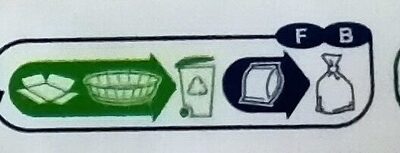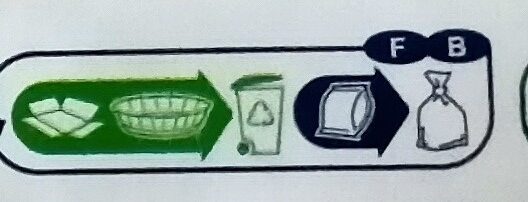Barre patissière - Simpl - 800 g
This product page is not complete. You can help to complete it by editing it and adding more data from the photos we have, or by taking more photos using the app for Android or iPhone/iPad. Thank you!
×
Some of the data for this product has been provided directly by the manufacturer Carrefour.
Barra-kodea: 3560070606856 (EAN / EAN-13)
Izen arrunta: Gâteau aux œufs frais.
Kopurua: 800 g
Ontziratzea: 22 PAP, en:Cardboard, fr:Film plastique
Kategoriak: en:Snacks, en:Desserts, en:Sweet snacks, en:Biscuits and cakes, Gozopil, en:Pastries, en:Pound Cake
Etiketak, ziurtagiriak, sariak:
en:Green Dot, Nutriscore, Nutriscore D, fr:Aux-oeufs-frais
Producer: Fabriqué par/ Voir la 1ère lettre du n° de Lot: si K = EMB 29024F, sinon = EMB22136H pour Interdis
Manufacturing or processing places: Pâtisseries Gourmandes (Filiale Groupe Roullié) - ZI de Kervoasdoué - 29270 Carhaix-Plouguer, Finistère, Pâtisseries Gourmandes (Filiale Groupe Roullier) - ZI de Kersuguet - 22600 Loudéac, Côtes-d'Armor, Bretagne, France
Traceability code: EMB 29024F - Carhaix-Plouguer (Finistère, France), EMB 22136H - Loudéac (Côtes-d'Armor, France), EMB 29151C - Morlaix (Finistère, France)
Dendak: Carrefour market, Carrefour, carrefour.fr
Saltzen diren herrialdeak: Frantzia, Italia, Polonia, Errumania, Espainia
Matching with your preferences
Other information
Other information: Qualité contrôlée Tous les Produits Blanc bénéficient régulièrment de contrôles qualité stricts réalisés par des laboratoires indépendants. Rajouter le code emballage fournisseur près du gencod: FLAN2520
Conservation conditions: Conservation : À conserver à l'abri de la chaleur et de l'humidité. Pour une dégustation optimale, à consommer de préférence avant la date indiquée sur le dessus de l'emballage.
Customer service: Interdis - TSA 91431 - 91343 MASSY Cedex - France
Report a problem
Datuen iturria
Product added on by jacob80
Last edit of product page on by yasmine69.
Produktuaren orria -gatik editatua carrefour, date-limite-app, didierg, driveoff, ecoscore-impact-estimator, firstpricelover, kiliweb, org-carrefour, packbot, quechoisir, roboto-app, spotter, zero.













